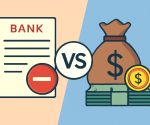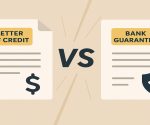The difference between demand-pull and cost-push inflation lies in their root causes and effects on the economy. Both demand-pull and cost-push inflation lead to rising prices, but they stem from different economic conditions. Demand-pull inflation occurs when demand for goods and services exceeds supply, causing prices to rise, while cost-push inflation results from rising production costs, which are passed on to consumers in the form of higher prices. Understanding these two types of inflation is essential for grasping how they impact the economy, purchasing power, and policy-making.
Meaning of Inflation
Inflation refers to the sustained increase in the general price level of goods and services in an economy over a period of time. When inflation occurs, each unit of currency buys fewer goods and services, thereby reducing purchasing power. Inflation is commonly measured by indices like the Consumer Price Index (CPI) and the Producer Price Index (PPI). It has both positive and negative impacts on the economy, affecting everything from consumer spending to investment and savings. Inflation is a significant economic phenomenon, influencing the cost of living, investment returns, and economic growth.
What is Demand-Pull Inflation and its Importance in Economy?
Demand-Pull Inflation occurs when aggregate demand in an economy outpaces aggregate supply. This situation typically arises when consumers have more disposable income, resulting in higher spending, or when businesses and governments increase their spending. As demand exceeds supply, prices rise to balance the shortage, causing inflation. Demand-pull inflation is often associated with a booming economy, where consumer confidence and employment levels are high, driving spending and investment.
Importance of Demand-Pull Inflation
- Economic Growth Indicator: Demand-pull inflation often indicates strong economic activity and growth potential.
- Encourages Production: Rising demand incentivizes businesses to expand production, boosting employment and output.
- Stimulates Investment: Higher demand leads to increased investment in capital, spurring technological advancements and infrastructure improvements.
While demand-pull inflation is a sign of a growing economy, excessive inflation can be detrimental, leading to an overheating economy and potential for corrective measures by central banks.
What is Cost-Push Inflation and its Importance in Economy?
Cost-Push Inflation is driven by rising costs of production that force businesses to increase the prices of goods and services. Key cost elements like labor, raw materials, and energy prices contribute to cost-push inflation. When these costs rise significantly, businesses pass them onto consumers in the form of higher prices to maintain profitability. Unlike demand-pull inflation, cost-push inflation can occur even when demand is stable or declining, as it is primarily a supply-side issue.
Importance of Cost-Push Inflation
- Resource Allocation Indicator: Rising production costs can signal resource scarcity, prompting efficient resource management.
- Incentivizes Innovation: High production costs encourage businesses to seek innovative production methods to reduce expenses.
- Sustainable Practices: When cost-push inflation is due to environmental regulations, it can lead to more sustainable production practices.
Cost-push inflation presents challenges, as it reduces profitability and consumer purchasing power, but it also drives firms toward more efficient practices and innovations.
Major Differences Between Cost-Push and Demand-Pull Inflation
The difference between Demand Pull and Cost Push Inflation lies in their origin, causes, and impact on the economy. While both lead to rising prices, demand-pull inflation is driven by excess demand, and cost-push inflation arises from increased production costs.
| Aspect | Demand-Pull Inflation | Cost-Push Inflation |
| Primary Cause | Excess demand in the economy | Rising production costs |
| Economic Conditions | Occurs during economic expansion | Can occur during economic downturns or supply disruptions |
| Impact on Supply and Demand | Increased demand exceeds supply | Rising costs reduce supply, affecting profitability |
| Indicators | High consumer spending, rising government spending | Rising raw material and labor costs, supply chain disruptions |
| Role of Production Costs | Production costs are relatively stable | Production costs increase due to external factors |
| Policy Response | Central banks may raise interest rates to control demand | Policies may focus on stabilizing supply or reducing costs |
| Effect on Purchasing Power | Decreases purchasing power due to increased prices | Reduces purchasing power but can also slow economic growth |
Demand-pull inflation is typically a result of economic growth, whereas cost-push inflation is often a result of constraints or disruptions in supply.
Conclusion
Difference between Demand Pull and Cost Push Inflation underscores how varying economic forces can drive inflation through distinct mechanisms. Demand-pull inflation results from rising consumer and business demand outpacing supply, usually during economic expansion. Cost-push inflation, however, arises from increased production costs, often due to external factors like raw material prices or labor costs. Understanding these differences is crucial for policymakers, businesses, and consumers to interpret inflation’s impact on the economy and respond appropriately. Balancing these types of inflation requires a combination of demand management and supply-side policies to ensure stable and sustainable economic growth.
Demand Pull vs Cost Push Inflation FAQs
How does demand-pull inflation differ from cost-push inflation?
Demand-pull inflation is driven by increased demand, while cost-push inflation is driven by higher production costs.
Can demand-pull and cost-push inflation occur simultaneously?
Yes, both can happen together, often leading to more persistent inflationary pressures in the economy.
How can cost-push inflation affect businesses?
Cost-push inflation can reduce profitability as businesses face higher production costs, often forcing them to raise prices.
What role does central banking play in controlling demand-pull inflation?
Central banks may raise interest rates to reduce spending and borrowing, helping to control demand-pull inflation.
Is cost-push inflation more harmful than demand-pull inflation?
Both have adverse effects, but cost-push inflation is challenging as it occurs even without strong demand, potentially leading to stagflation.


